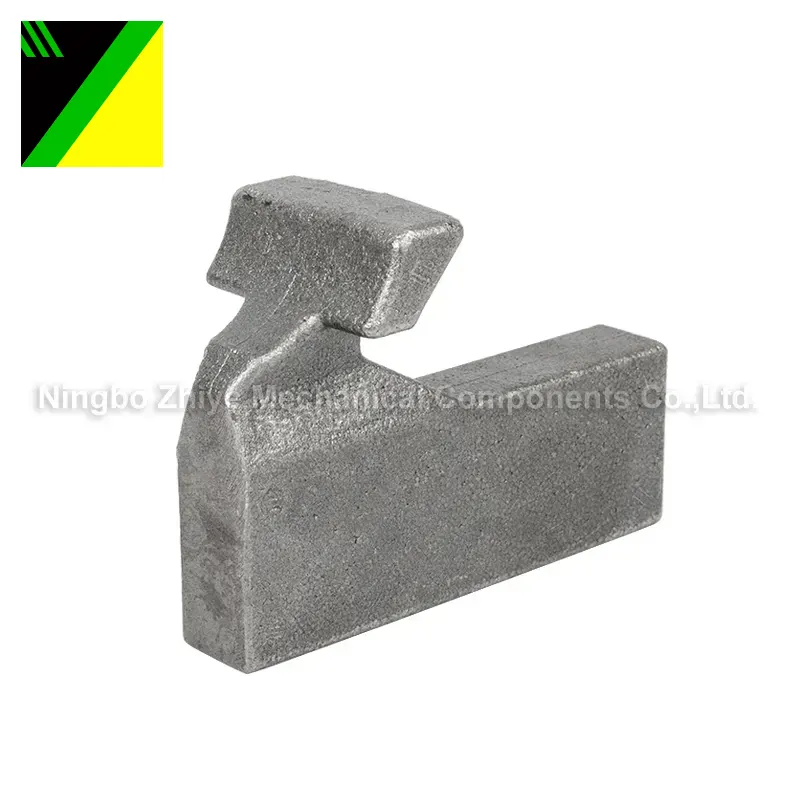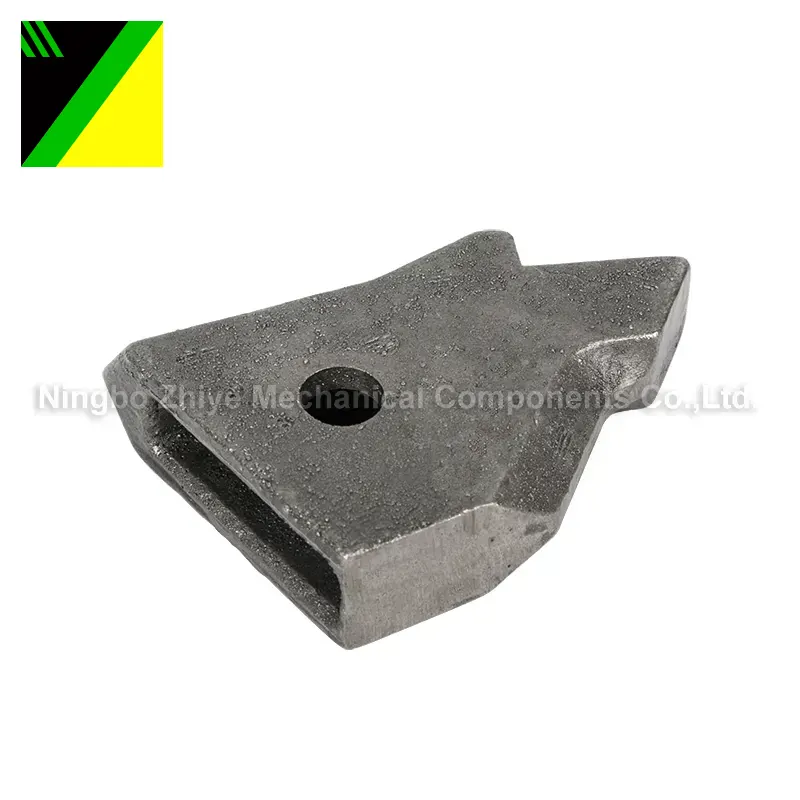
- English
- Español
- Português
- русский
- Français
- 日本語
- Deutsch
- tiếng Việt
- Italiano
- Nederlands
- ภาษาไทย
- Polski
- 한국어
- Svenska
- magyar
- Malay
- বাংলা ভাষার
- Dansk
- Suomi
- हिन्दी
- Pilipino
- Türkçe
- Gaeilge
- العربية
- Indonesia
- Norsk
- تمل
- český
- ελληνικά
- український
- Javanese
- فارسی
- தமிழ்
- తెలుగు
- नेपाली
- Burmese
- български
- ລາວ
- Latine
- Қазақша
- Euskal
- Azərbaycan
- Slovenský jazyk
- Македонски
- Lietuvos
- Eesti Keel
- Română
- Slovenski
- मराठी
- Srpski језик
China Ductile Iron Casting Factory
1. Definition:
Cast iron is an iron-carbon alloy with a carbon content greater than 2.11%. It is obtained by high-temperature melting and casting of industrial pig iron, scrap steel and other steel and alloy materials. Except for Fe, cast iron with carbon in the form of graphite in the form of spheres is called ductile iron.
2. Performance characteristics
Ductile iron is a high-strength cast iron material developed from the late 1940s to the 1950s. It has excellent comprehensive performance. The specific performance characteristics can be explained from the following aspects:
1) Excellent mechanical properties
1.1. High strength. The tensile strength of ductile iron far exceeds that of gray cast iron and is equivalent to that of steel.
1.2. High yield strength. The yield strength of ductile iron is as low as 40K, while the yield strength of steel is only 36K, which shows the excellent performance of ductile iron under stress.
1.3. Good plasticity and toughness. Through spheroidization and inoculation treatment, the graphite inside ductile iron is spherical, which effectively improves the plasticity and toughness and avoids the tendency to crack.
2) Good physical properties
2.1) Good castability. Ductile iron has good casting properties and can cast parts with complex shapes and precise dimensions.
2.2) Excellent shock absorption. Due to the presence of graphite, when ductile iron is vibrated, the graphite balls can absorb part of the vibration energy, thereby reducing the vibration amplitude.
2.3) Wear resistance. Certain alloy elements can be added to ductile iron to obtain wear-resistant ductile iron, which can work under abrasive wear conditions.
2.4) Heat resistance. By adding specific elements such as (silicon, aluminum, nickel, etc.), a dense oxide film or antioxidant elements can be formed on the surface of the casting to hinder further oxidation, increase the critical temperature of ductile iron, and make it suitable for high-temperature working environments.
2.5) Corrosion resistance. Adding alloy elements such as silicon, chromium, aluminum, molybdenum, copper and nickel to ductile iron can form a protective film on the surface of the casting, which can improve the corrosion resistance of ductile iron and make it suitable for corrosive environments such as chemical parts.
3) Economic performance advantages
3.1. Low cost. Compared with steel, ductile iron is cheaper, which can significantly reduce casting costs.
3.2. Save materials. For parts that bear static loads, ductile iron saves more materials than cast steel, and is lighter, which helps reduce material, transportation and installation costs.
|
Chinese ductile iron grades and mechanical properties [GB/T 1348--1988] |
|||||
|
Brand |
tensile strength |
Yield Strength |
Elongation |
hardness |
Matrix structure (volume fraction) |
|
QT900-2 |
900 |
600 |
2 |
280-360 |
Bainite or tempered martensite (lower bainite or tempered martensite, tempered troostite) |
|
QT800-2 |
800 |
480 |
2 |
245-335 |
Pearlite (pearlite or tempered troostite) |
|
QT700-2 |
700 |
420 |
2 |
225-305 |
Pearlite (pearlite or tempered troostite) |
|
QT700-2 |
700 |
420 |
2 |
225-305 |
Pearlite (pearlite or tempered troostite) |
|
QT600-3 |
600 |
370 |
3 |
190-270 |
Pearlite + ferrite (P: 80%-30%) |
|
QT500-7 |
500 |
320 |
7 |
170-230 |
Pearlite + ferrite (F: 80%-50%) |
|
QT450-10 |
450 |
310 |
10 |
160-210 |
Ferrite (≥80% ferrite) |
|
QT400-15 |
400 |
250 |
15 |
130-180 |
Ferrite (100% ferrite) |
|
QT400-18 |
400 |
250 |
18 |
130-180 |
Ferrite (100% ferrite) |
3、Chemical composition of commonly used ductile iron:
|
Chemical composition of ductile iron (for reference) |
||||||||||
|
Brand and type |
Chemical composition (mass fraction %) |
|||||||||
|
C |
Si |
Mn |
P |
S |
Mg |
RE |
Cu |
Mo |
||
|
QT900-2 |
Before pregnancy |
3.5-3.7 |
|
≤0.50 |
≤0.08 |
≤0.025 |
|
|
|
|
|
After pregnancy |
|
2.7-3.0 |
|
|
|
0.03-0.05 |
0.025-0.045 |
0.5-0.7 |
0.15-0.25 |
|
|
QT800-2 |
Before pregnancy |
3.7-4.0 |
|
≤0.50 |
0.07 |
≤0.03 |
|
|
|
|
|
After pregnancy |
|
2.5 |
|
|
|
|
|
0.82 |
0.39 |
|
|
QT700-2 |
Before pregnancy |
3.7-4.0 |
|
0.5-0.8 |
≤0.08 |
≤0.02 |
|
|
|
|
|
After pregnancy |
|
2.3-2.6 |
|
|
|
0.035-0.065 |
0.035-0.065 |
0.40-0.80 |
0.15-0.40 |
|
|
QT600-3 |
Before pregnancy |
3.6-3.8 |
|
0.5-0.7 |
≤0.08 |
≤0.025 |
|
|
|
|
|
After pregnancy |
|
2.0-2.4 |
|
|
|
0.035-0.05 |
0.025-0.045 |
0.50-0.75 |
|
|
|
QT500-7 |
Before pregnancy |
3.6-3.8 |
|
≤0.60 |
≤0.08 |
≤0.025 |
|
|
|
|
|
After pregnancy |
|
2.5-2.9 |
|
|
|
0.03-0.05 |
0.03-0.05 |
|
|
|
|
QT450-10 |
Before pregnancy |
3.4-3.9 |
|
≤0.50 |
≤0.07 |
≤0.03 |
|
|
|
|
|
After pregnancy |
|
2.2-2.8 |
|
|
|
0.03-0.06 |
0.02-0.04 |
|
|
|
|
QT400-15 |
Before pregnancy |
3.5-3.9 |
|
≤0.50 |
≤0.07 |
≤0.02 |
|
|
|
|
|
After pregnancy |
|
2.5-2.9 |
|
|
|
0.04-0.06 |
0.03-0.05 |
|
|
|
|
QT400-18 |
Before pregnancy |
3.6-3.9 |
|
≤0.50 |
≤0.08 |
≤0.025 |
|
|
|
|
|
After pregnancy |
3.6-3.9 |
2.2-2.8 |
|
|
|
0.04-0.06 |
0.03-0.05 |
|
|
|
4、Comparison of ductile iron grades in various countries
|
Serial number |
Country |
Iron Plate |
||||||
|
1 |
China |
QT400-18 |
QT450-10 |
QT500-7 |
QT600-3 |
QT700-2 |
QT800-2 |
QT900-2 |
|
2 |
Japan |
FCD400 |
FCD450 |
FCD500 |
FCD600 |
FCD700 |
FCD800 |
|
|
3 |
United States |
60-40-18 |
65-45-12 |
70-50-05 |
80-60-03 |
100-70-03 |
120-90-02 |
|
|
4 |
Former Soviet Union |
B440 |
BY45 |
BI50 |
B460 |
B470 |
BII80 |
B4100 |
|
5 |
Germany |
GGG40 |
|
GGG50 |
GGG60 |
GGG70 |
GGG80 |
|
|
6 |
Italy |
GS370-17 |
GS400-12 |
GS500-7 |
GS600-2 |
GS700-2 |
GS800-2 |
|
|
7 |
France |
FGS370-17 |
FGS400-12 |
FGS500-7 |
FGS600-2 |
FGS700-2 |
FGS800-2 |
|
|
8 |
United Kingdom |
400/17 |
420/12 |
500/7 |
600/7 |
700/2 |
800/2 |
900/2 |
|
9 |
Poland |
ZS3817 |
ZS4012 |
ZS 4505 |
ZS6002 |
ZS7002 |
ZS8002 |
ZS9002 |
|
10 |
India |
SG370/17 |
SG400/12 |
SG500/7 |
SG600/3 |
SG700/2 |
SG800/2 |
|
|
11 |
Romania |
|
|
|
|
FGN70-3 |
|
|
|
12 |
Spain |
FGE38-17 |
FGE42-12 |
FGE50-7 |
FGE60-2 |
FGE70-2 |
FGE80-2 |
|
|
13 |
Belgium |
FNG38-17 |
FNG42-12 |
FNG50-7 |
FNG60-2 |
FNG70-2 |
FNG80-2 |
|
|
14 |
Australia |
300-17 |
400-12 |
500-7 |
600-3 |
700-2 |
800-2 |
|
|
15 |
Sweden |
0717-02 |
|
0727-02 |
0732-03 |
0737-01 |
0864-03 |
|
|
16 |
Hungary |
GǒV38 |
GǒV40 |
GǒV50 |
GǒV60 |
GǒV70 |
|
|
|
17 |
Bulgaria |
380-17 |
400-12 |
450-5 |
600-2 |
700-2 |
800-2 |
900-2 |
|
18 |
International Standard (ISO) |
400-18 |
450-10 |
500-7 |
600-3 |
700-2 |
800-2 |
900-2 |
|
19 |
Pan-American Standard (COPANT) |
|
FMNP45007 |
FMNP55005 |
FMNP65003 |
FMNP70002 |
|
|
|
20 |
Finland |
GRP400 |
|
GRP500 |
GRP600 |
GRP700 |
GRP800 |
|
|
21 |
Netherlands |
GN38 |
GN42 |
GN50 |
GN60 |
GN70 |
|
|
|
22 |
Luxembourg |
FNG38-17 |
FNG42-12 |
FNG50-7 |
FNG60-2 |
FNG70-2 |
FNG80-2 |
|
5、Ductile Iron Application Areas
1) Pressure Pipes and Fittings
When ductile iron was first used as pipes, iron pipes and fittings were mostly produced by major industrial countries. Ductile iron pipes have long been proven to be superior to gray cast iron pipes for transporting water and other liquids. The main reason for this change is that the strength and toughness of ferritic ductile iron make pipes made of this material able to withstand high operating pressures and can be easily loaded and unloaded during laying.
2) Automobile Applications
In terms of tonnage produced, the automotive industry is the second largest user of ductile iron castings. Ductile iron is used in three main places in automobiles: (1) Power source - engine components; (2) Power transmission - gear trains, gears and bushings; (3) Vehicle suspension, brakes and steering devices.
3) Agricultural, road and construction applications
Modern economical agricultural methods require agricultural machinery that can be provided with reliable and long service life when required.
Ductile iron castings widely used throughout the agricultural industry include various tractor parts, plows, brackets, clamps and pulleys. A typical component is the rear axle housing of a farm vehicle, which was originally made of cast steel. The road paving and construction industries require a considerable amount of various types of equipment including bulldozers, driving machines, cranes and compressors, and ductile iron castings are used in these areas.
4) General Applications
The ductile iron machine tool industry takes advantage of the engineering properties of ductile iron, which allows the design of complex machine tool components and heavy machine castings weighing more than 10 tons. Applications include injection molds, forging machine cylinders and pistons. The high tensile and yield strength of ductile iron and its good machinability allow the production of lighter castings while maintaining their rigidity. Similarly, the strength and toughness of ductile iron make it an ideal material for various hand tools such as wrenches, clamps and gauges.
5) Valve Manufacturing
Valve manufacturers are the main users of ductile iron (including austenitic ductile iron), and its applications include the successful conveying of various acids, salts and alkaline liquids.
- View as







